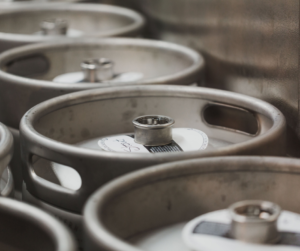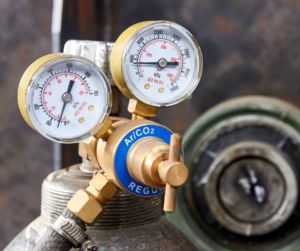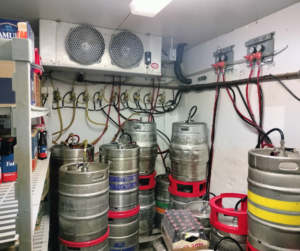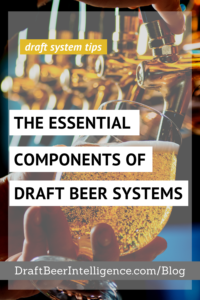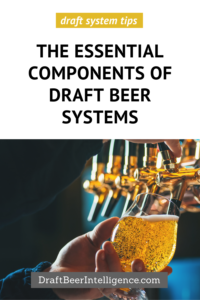Draft beer systems can be found in bars and restaurants everywhere, and the number of home brewers interested in setting up their systems has increased as well.
If you’re new to beer operations or considering setting up a home bar, you’re probably wondering what components make up a draft beer system.
While it may seem complicated initially, it’s not difficult to understand what you need to set up a basic draft beer system.
In this blog post, we will take you through the essential components of a draft beer system, why each is important, and how they work together.
Keg
The keg is a container for holding and storing beer. It is available in various sizes, ranging from 1/6 barrel (5 gallons) to 1/2 barrel (15.5 gallons).
Kegs can either be made of stainless steel or aluminum. Stainless steel is the most common material used in keg construction. It is resistant to rust and corrosive substances such as beer and provides insulation to keep the beer cold.
Kegs come in different shapes, but the most common ones are cylindrical. And to keep the beer fresh, the keg should be kept cool at a constant temperature of 38°F.
Click here to read more about the different draft beer keg types and sizes.
Keg Coupler
The keg coupler is the adapter that connects the keg’s valve to the beer line. It connects to the keg, allowing the beer to flow through the beer line and allowing for the release of CO2 that helps maintain the pressure in the keg.
There are various types of keg couplers, depending on the brand and size of the keg they are intended to be used with.
CO2 and Nitrogen Gas Cylinders
The CO2 and nitrogen gas cylinders pressurize the keg to dispense the beer. In draft systems, this cylinder is usually found in 5lb and 20lb sizes, depending on how many beers you serve and how often you change the cylinder.
It stores carbon dioxide gas that pushes the beer out of the keg and into the glass. Keeping the cylinder upright and away from heat is essential to prevent it from exploding.
Primary and Secondary Gas Regulator and Line
The gas line transports the gas from the cylinder to the keg coupler. The type of gas varies depending on the product you are dispensing. Beer uses CO2, while wine and cocktails use nitrogen. Primary CO2 and N2 regulators have specific connections to connect to their respective gas cylinders.
The line is made of vinyl, and the distance between the kegerator and the keg determines its length. The pressure of the gas is regulated using a pressure regulator.
The regulator is the device that controls the pressure of the gas coming from the cylinder. It must be adjusted to ensure the proper gas flow to maintain carbonation and the beer flow rate. There are primary and secondary gas regulators, and their usage varies on your system setup and design.
The gas line connects the regulator to the keg coupler. It is an essential system component as it delivers carbon dioxide gas to the keg so the beer can flow.
Beer Line
The beer line is where the beer flows from the keg to the faucet. It is usually made of PVC or polyethylene; its length varies depending on the system design.
The diameter of the beer line affects the beer’s flow rate, with smaller diameter lines restricting flow and larger diameter lines having less restriction. Different quality beer lines range from non-barrier to partial and full barrier tubing.
Faucet and Handle
The faucet and the handle are the final components of the draft beer system. The faucet is the dispensing point for the beer, and it is attached to the beer shank, while the handle controls the beer flow from the faucet. A shank connects the faucet to the beer line and is attached to the wall or beer tower.
Keeping the faucet and handle clean is important to avoid contamination, which can result in bad-tasting beer.
Now that you know the essential components of a draft beer system…
Are You Ready To Design and Install Your Draft Beer System?
Here at Draft Beer Intelligence, we always want to help you deliver the perfect pour daily. And to make sure that your draft beer systems produce GREAT-tasting beer and MAXIMIZE profits!
Remember, proper system maintenance is crucial to ensure the beer is fresh and high-quality. By monitoring the system’s temperature, pressure, and cleanliness, you will surely have happy patrons or satisfied friends.
Contact us anytime if you need draft beer or beverage system design, installation, ongoing maintenance, or service nationwide. Together, let’s keep “DOING BEER JUSTICE!”

